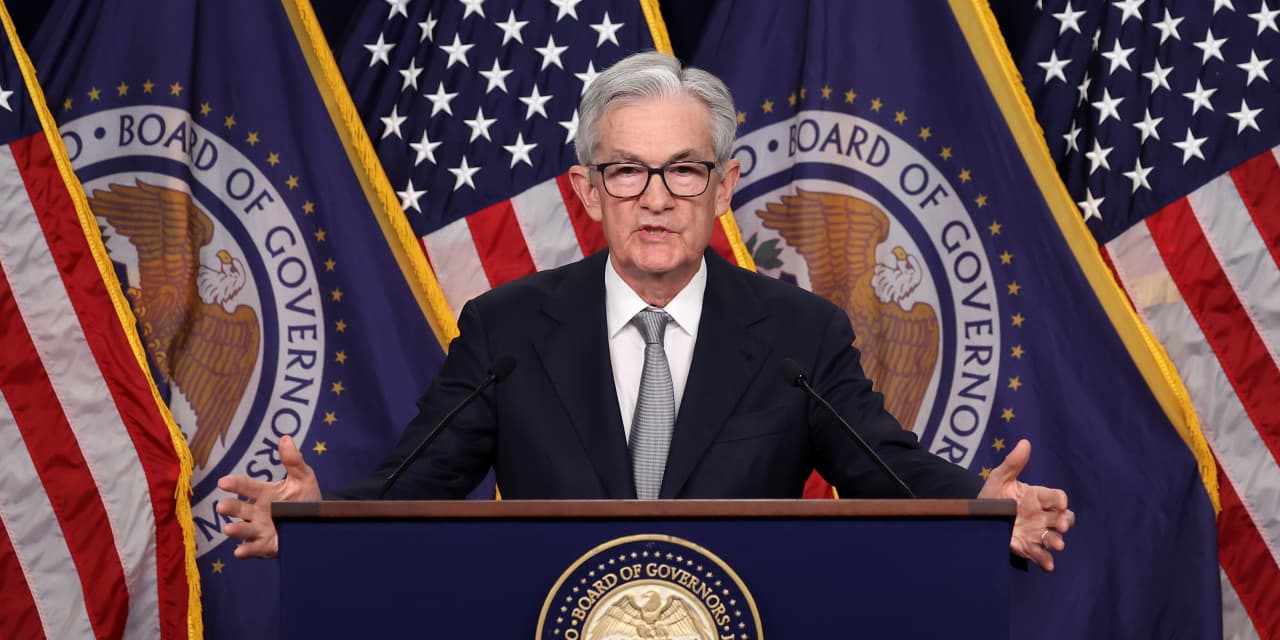Federal Reserve Chair Jerome Powell on Friday said that while the central bank has made significant progress on bringing inflation down to its 2% target, it’s still prepared to tighten monetary policy further if needed.
“We are prepared to tighten policy further if it becomes appropriate to do so,” Powell said in a speech at Spelman College ahead of a fireside chat with Spelman College President Helene Gayle focused on the challenges of the post-Covid economy in the U.S.
It would be premature to conclude that the Fed has achieved a sufficiently restrictive monetary policy stance—or to speculate on when rate cuts may start, Powell said. Especially when the Fed’s preferred inflation gauge, released Thursday, still shows inflation at 3.5% in October when calculated excluding the more volatile food and energy prices.
“We have to restore price stability because price stability is really the bedrock of the economy,” Powell told attendees.
Powell said he and his fellow Fed policymakers are proceeding carefully, making decisions on a meeting-by-meeting basis based on the” totality of the incoming data” and the balance of risks.
That’s due, in part, to the fact that while Powell said he believes the 11 rate hikes the Fed has implemented so far have shifted monetary policy “well into restrictive territory,” the full effects of rate hikes have likely not yet been felt.
In his opening remarks, Powell again acknowledged the risks of not raising rates enough to sustainably cool inflation versus over-tightening and sending the economy into a downturn are becoming more balanced.
“Policy is at a restrictive level, meaning it’s holding the economy back. Inflation is still running well-above target, but it’s moving in the right direction. So we think the right thing to be doing now is to be moving carefully,” he said.
The next Federal Open Market Committee meeting is set to take place Dec. 12-13. Markets are pricing in another pause. After Powell’s remarks, there was a 99.6% probability that officials will keep the benchmark rate steady at the conclusion of the meeting, according to the CME FedWatch Tool.
Despite Powell’s stay-the-course comments that checked some of the optimism shown by Fed Governor Christopher Waller earlier this week, markets appeared to view Powell’s tone as inching toward the dovish camp, Jeffrey Roach, chief economist for LPL Financial wrote.
The S&P 500 and Dow Jones Industrial Average were higher after the speech, up 0.5% and 0.7%, respectively. The Nasdaq Composite was up 0.3%. The 10-year Treasury yield was down to 4.223%.
Roach said he believes that Fed watchers latched onto a slight change in Powell’s tone. A few weeks ago, Powell said policy was restrictive. Today, he noted policy was ‘well into restrictive territory,’ a subtle, but perhaps key, shift.
Of course, investors could be in a state of denial, José Torres, senior economist at Interactive Brokers, suggested. “Perhaps investors have dismissed his presentation with hopes that he is on the verge of becoming more dovish and will reflect such sentiment at the next Fed meeting on December 13,” he said.
Perhaps more clear is the uncertainty around the economic outlook. Following the onset of Covid-19 pandemic, the economic landscape today is a bit unique, Powell said Friday. When the Fed has attempted to bring down high inflation in the past, typically that has resulted in significant job losses. That hasn’t happened yet. “We’ve always felt…there’s a path to getting inflation back down to 2% without that kind of large job loss—and I still believe that, I’ve always believed that, and we’re on that path,” Powell said.
“You’ve seen growth slowing back to a more sustainable level and we hope we can stay on that path,” Powell said.
The economy has repeatedly surprised Fed policy makers and all other forecasters, Powell said. Especially when it comes to consumer spending, which makes up about 70% of economic activity. Powell pointed to the fact that pandemic-era savings and government stimulus have helped drive much of the high consumer spending seen in recent years.
“What’s been amazing is how strong consumer spending has continued to be,” Powell said. But with credit-card balances growing and delinquencies ticking up, Powell said consumer spending, and the wider economy, might be cooling. The extent of the slowing remains an open question.
“As long as unemployment remains low, unemployment remains high, and wages are moving up above inflation, though, there’s no reason why spending wouldn’t continue to hold in there,” Powell said.
Noting his audience was college students, Powell was fairly optimistic that the current economic conditions still would provide a lot of opportunity in the labor market for new graduates. He, for example, called out that the Fed’s progress in taming inflation has come while still maintaining a strong labor market and job creation.
“The unemployment rate has risen a bit, but it is still very low by historical standards, and by many measures, it is a great time to start your career,” he said. “For our part, at the Fed we are doing our best to foster an economy that gives you the best opportunity to succeed.”
Powell will participate in back-to-back discussions Friday. The fireside chat will be followed by a roundtable discussion, also at Spelman College, with Powell and Fed Governor Lisa Cook.
The roundtable discussion can be viewed above and a recording of Powell’s fireside chat can be viewed below.
Write to Megan Leonhardt at [email protected]
Read the full article here




